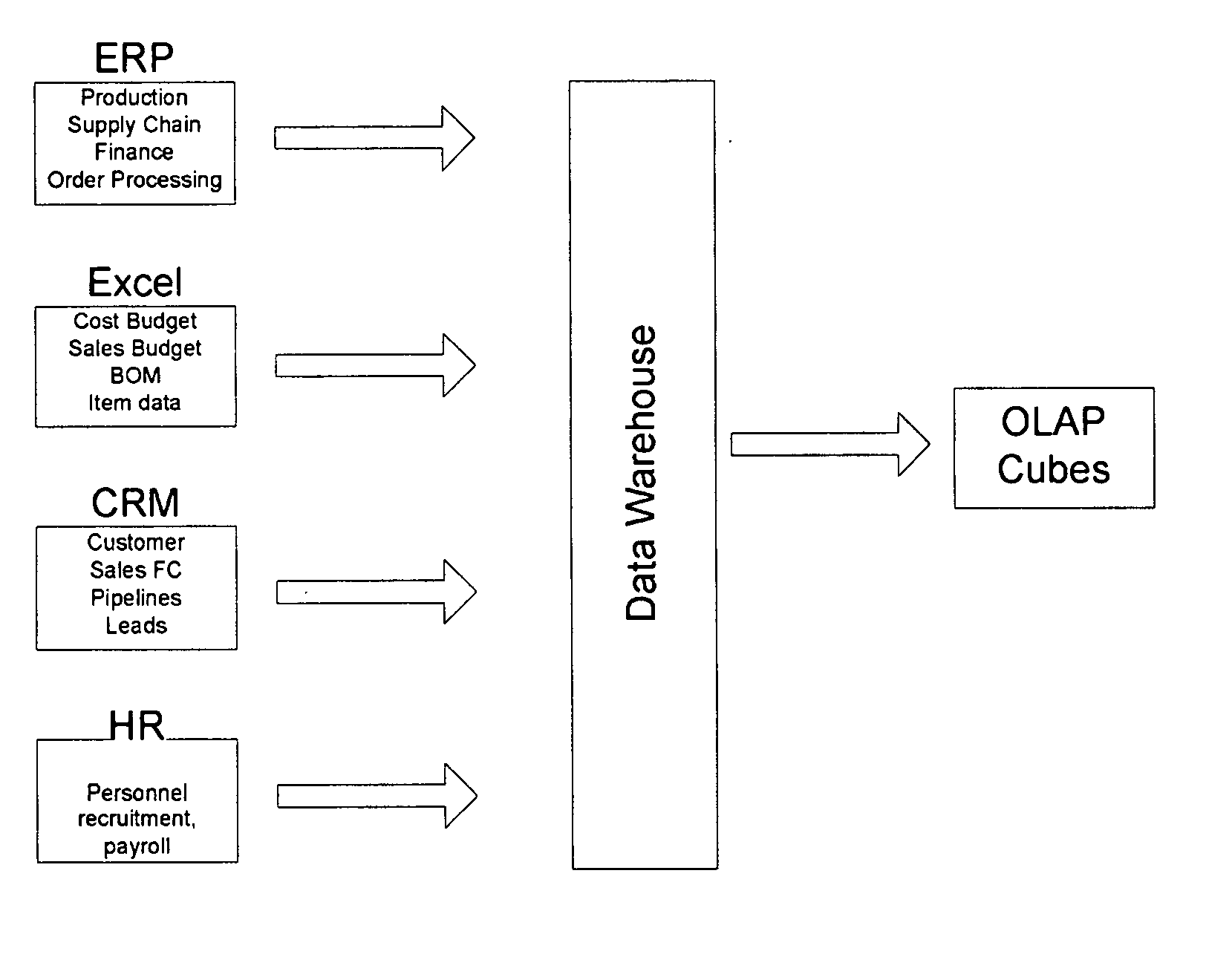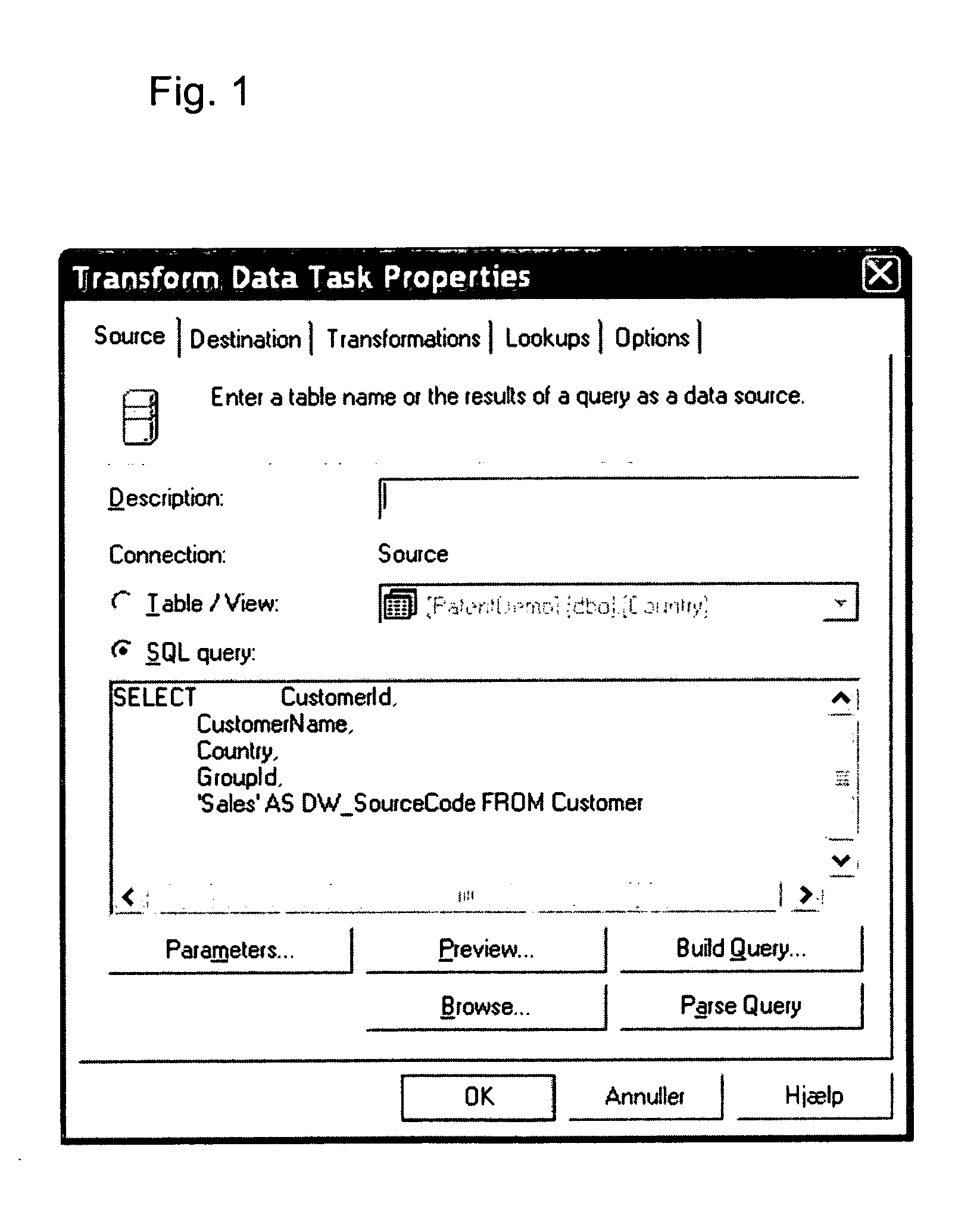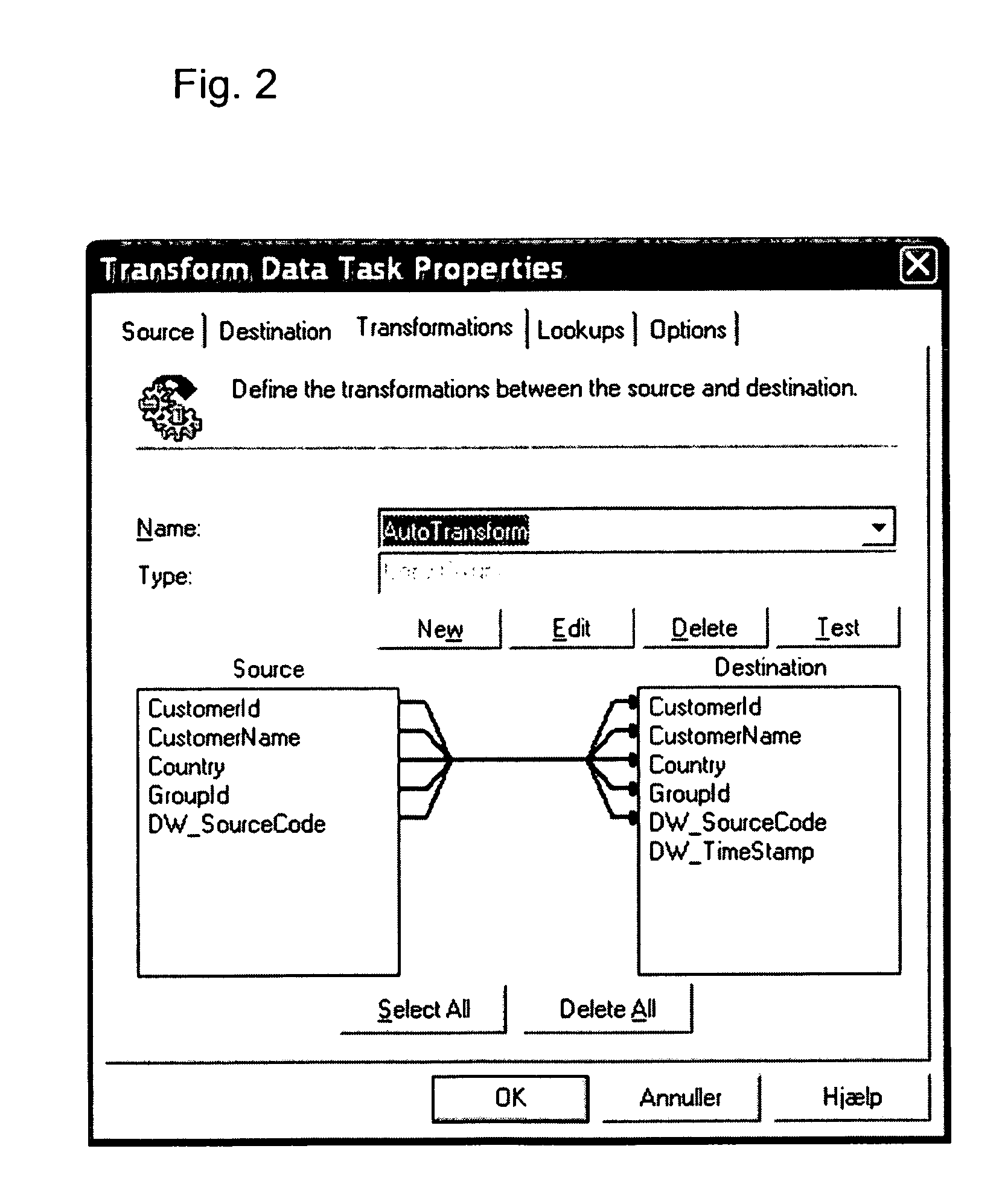Method for generating data warehouses and OLAP cubes
a technology of data warehouses and cubes, applied in the direction of structured data retrieval, electric digital data processing, instruments, etc., can solve the problems of no one person claiming ownership of the solution, no one person can add much perspective on the business intelligence side, and the difficulty of identifying and analyzing information from a range of unaligned systems. , to achieve the effect of easy selection or deselection of specific tables and easy data selection
- Summary
- Abstract
- Description
- Claims
- Application Information
AI Technical Summary
Benefits of technology
Problems solved by technology
Method used
Image
Examples
Embodiment Construction
[0128] The following example illustrates certain aspects of the invention.
[0129] In a typical practical scenario, tables are located in more than on data source. For example, a company's product management division (handling for instance tables “Products”, “ProductCategory” and “ProductGroup”) may for instance operate two SQL servers and an Oracle database. On the other hand, the logistics division (handling for instance tables “OrderLines”, “Orders” and “Customers”) may operate three Oracle servers, and the occasional Microsoft Excel database. FIGS. 5 and 6 illustrate interfaces for providing an Oracle source and an Excel source, respectively.
[0130]FIG. 7 illustrates a typical system process of forming a data warehouse and OLAP cubes. A number of data sources, such as an Enterprise Resource System source (“ERP” in FIG. 7), A Microsoft Excel source (“Excel” in FIG. 7), a Customer Relationship Management source (“CRM” in FIG. 7) and a Human Resource source (“HR” in FIG. 7) may form...
PUM
 Login to View More
Login to View More Abstract
Description
Claims
Application Information
 Login to View More
Login to View More - R&D
- Intellectual Property
- Life Sciences
- Materials
- Tech Scout
- Unparalleled Data Quality
- Higher Quality Content
- 60% Fewer Hallucinations
Browse by: Latest US Patents, China's latest patents, Technical Efficacy Thesaurus, Application Domain, Technology Topic, Popular Technical Reports.
© 2025 PatSnap. All rights reserved.Legal|Privacy policy|Modern Slavery Act Transparency Statement|Sitemap|About US| Contact US: help@patsnap.com



